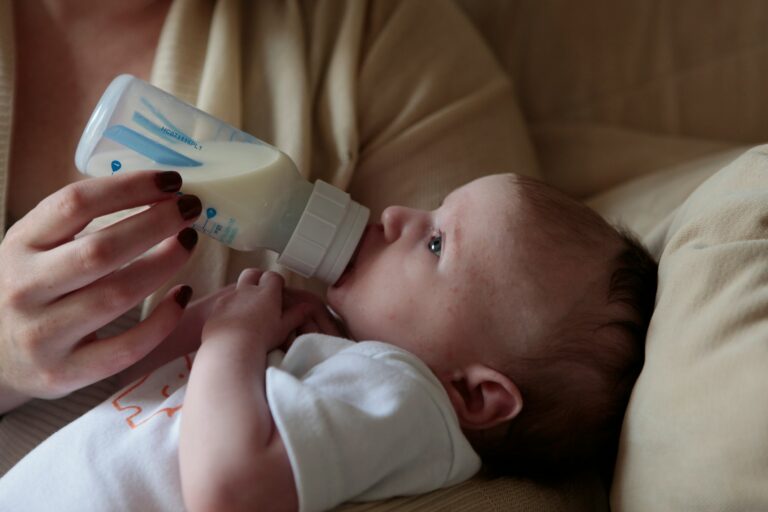Every parent, at one point or another, has paused, ears attuned to the unmistakable wail that is baby crying. That sharp crescendo in the middle of the night, or the plaintive sobs come evening, can ignite both worry and confusion—what exactly is being communicated? Why do some babies seem endlessly unsettled, while others offer silence? How does a parent know when to intervene, and when to observe? Faced with such a powerful, sometimes relentless means of communication, it is natural to seek answers, reassurance, and effective strategies. In the following sections, find an in-depth exploration into the varied landscape of baby crying: from physiological origins to practical soothing tips, with an emphasis on medical understanding, evidence-based recommendations, and the everyday realities experienced by parents.
Baby crying explained: why do babies cry?
For an infant, baby crying is not merely a sound—it is the primary language, purpose-built for survival and bonding. Within minutes of entering the world, these tiny human beings lean on crying as the main signal for needs: hunger, fatigue, temperature discomfort, pain, or the simple desire for a gentle touch. Even the briefest of cries sets off a biological cascade, engaging the amygdala (the emotion center of the brain), sparking rises in stress hormones like cortisol, and causing physical changes in both baby and caregiver.
Surprisingly, the peak of baby crying usually unfolds at around six to eight weeks, before gradually sliding downwards as the infant’s nervous system advances and self-soothing skills emerge. Each cry, whether sharp and urgent or soft and persistent, serves to maintain an essential connection—ensuring needs are met with care and, in the process, nurturing robust neurological development.
Common reasons for baby crying
Hunger and thirst: meeting basic needs
That rhythmic, escalating squall—often accompanied by frantic rooting or fist-sucking—typically signals hunger, one of the most recognisable causes of baby crying. Babies, especially newborns, possess very limited reserves and require frequent, small feeds. Missing these early cues? Expect the volume to intensify. Interestingly, some infants use sucking not just for hunger, but also for comfort; the boundary between nutritional need and emotional reassurance can blur, leaving parents to decipher the difference through observation and trial.
Fatigue and the need for sleep
As the sun drops and the end of the day looms, many parents witness a distinct change. Irritable, irregular, sometimes almost whimpering—fatigue-driven baby crying bears its own signature. Signs include droopy eyelids, forceful yawns, and persistent fidgeting. The remedy? A predictable, gentle bedtime routine—think humming a lullaby or soft cradling—provides cues that nudge little ones towards restful sleep, reducing evening fussiness.
Physical discomfort: diapers, clothes, environment
Discomfort comes in innumerable forms: a damp diaper sticking to tender skin, elastic biting into chubby thighs, or a room chilling with the evening breeze. Each prompt can set off a wave of baby crying, typically less intense than cries of pain but insistent until relief is provided. Quick checks for a soiled diaper, ill-fitting clothing, or adjustments in room temperature often bring immediate calm.
Pain and distress: colic, teething, gas
Few experiences challenge families like colic. Imagine: high-pitched baby crying, relentless and piercing, usually in the twilight hours. The cause? Still debated, but possibly related to immature digestion or gut sensitivity, as often accompanied by knees drawn up and tense abdominal muscles. Colic, by classic definition, persists for more than three hours per day, at least three days per week, for over three weeks—the infamous “rule of threes”. The good news: most cases resolve by four months.
Other pains? Teething brings its unique cocktail of symptoms: drooling, swelling of the gums, and irritable, abrupt baby crying. Gastroesophageal reflux or excessive wind can also disrupt peace, marked by back-arching, spit-ups, or inconsolable bouts following feeds.
Need for comfort and closeness
Babies are hardwired for connection. Sometimes, baby crying emerges not from discomfort or hunger but from the longing for a loving embrace, a familiar heartbeat, or the warmth of skin-to-skin contact. These “release cries” let babies offload accumulated stress. Gentle cuddles, whispering softly, or maintaining physical contact work wonders to reassure and calm an unsettled infant.
Overstimulation or boredom
A bauble spinning above the crib, a blaring TV, multiple faces crowding in—sensory overload is real for babies. Equally, boredom (yes, even for such young minds) can spark restless, low-grade baby crying. The solution sometimes lies in simplicity: dim the lights, reduce noise, or quietly interact with your child, tailoring stimulation to their tolerance at any moment.
Less common triggers
Not every source of baby crying is easily spotted. Sometimes a strand of hair coiled around a tiny toe (so-called hair tourniquet), or even the side effects of medication, can be at fault. Rare, involuntary body movements (myoclonic jerks) during sleep may briefly startle an infant, but typically settle without intervention.
Types of baby cries and how to recognize them
Not all cries carry the same message. The subtleties—cadence, pitch, associated gestures—offer telling clues:
- Hunger cry: Steady, rhythmic escalation; nipples sought, hands to mouth.
- Tired cry: More whiny, intermittent, growing in intensity when ignored. Look for eye-rubbing and yawning.
- Pain or colic cry: Shrill, sudden onset, frequently paired with back-arching or knees-to-chest.
- Discomfort cry: Repetitive but softer, likely to stop once the physical issue is addressed.
- Fussiness during evening: Muted, intermittent grizzling that gradually builds, typical in late afternoon or early night.
- Need for comfort: Gentle whimpering, sometimes escalating if left unaddressed, but often soothed rapidly by cuddling.
By attuning to these signals, parents can intervene faster, reducing overall baby crying and fostering a more peaceful atmosphere.
Baby crying patterns and development
The trajectory of baby crying is anything but uniform. Newborns frequently cry up to two-three hours in 24 hours, especially in the early weeks. Patterns shift as the weeks pass: an evening fussiness phase (sometimes termed “witching hour”) is not unusual, and temperament—ranging from placid to intense—shapes both the frequency and ferocity of cries. Other influences: minor birth events, underlying health issues such as reflux or allergies, and variations in caregiving routines.
Responsive caregiving—meaning, tuning in and flexibly responding to these ever-changing cues—builds self-regulation (the ability for babies to eventually calm themselves) and deepens parent-infant attachment. This approach forms the very foundation for healthy emotional evolution.
The science behind baby crying
Baby crying is more than just noise; it’s a physiologically orchestrated response. With each bout, levels of cortisol surge, heart rate accelerates, and muscle tone increases—not just in the baby but also in the parent. This shared stress response can be taxing, yet also lays the groundwork for increased bonding. Fascinatingly, as weeks roll on, babies’ cries start mirroring the intonation of their native language, marking the first brush-strokes of verbal skills.
Biological stress mechanisms work both ways. The more reliably and warmly a parent responds, the faster the stress response in the infant is soothed. Over time, this contributes to a stable emotional base for healthy growth and bonding.
How to respond to baby crying
Responsive caregiving is about keen observation. Address possible hunger, check diapers, ensure comfort, and look for signs of fatigue. Don’t underestimate the power of your presence—sometimes, simply holding or gently talking to your baby makes all the difference. Maintaining calm is equally essential; research highlights that even subtle parental tension is perceived by infants. Short breaks or a change of scenery are sometimes all that’s required for both baby and parent to reset.
Soothing a crying baby: techniques and tips
- Feed and burp when necessary.
- Change diapers promptly, check for tight waistbands or scratchy tags.
- Embrace skin-to-skin contact (“kangaroo care”) for deep reassurance.
- Carry your baby using supportive arms or appropriate slings—this often minimizes baby crying and grants you hands-free moments.
- Gently rock, sway, or perform repetitive motions to lull your baby.
- Use a pacifier or encourage non-nutritive sucking for comfort.
- Warm baths, soft massages of the tummy, or gentle back rubs offer soothing relief.
- Dim the room, mute unnecessary sounds, establish a peaceful routine to create a sanctuary.
- Overstimulated? Withdraw to a quiet, gentle environment.
- Take care of your own wellbeing—brief pauses can safeguard you. Never attempt to shake an infant, regardless of frustration.
Managing excessive crying and colic
Defined by the “rule of threes”, excessive baby crying—often called colic—remains a common challenge between the second and twelfth weeks of life. The cause might be digestive immaturity, sensory overload, or unknown factors. Strategies to try:
- Adapting feeding schedules or techniques.
- Gentle massages to ease abdominal tension.
- Babywearing for comfort and convenience.
- Swaddling, using safe techniques.
- Utilising gentle white noise, soothing sounds, or a pacifier.
Importantly, research is clear: sensitive, immediate responses support emotional resilience in children. Myths about “spoiling” babies through responsive care have been debunked; prompt comfort does not breed dependency. However, if baby crying is ever accompanied by alarming symptoms—such as fever, vomiting, changes in skin colour—consult a healthcare provider without hesitation.
Impact of baby crying on caregivers
There is no sugarcoating it—prolonged baby crying can drain any parent, mentally and physically. Stress, fatigue, and moments of helplessness are common and deserve acknowledgement. Healthy coping methods are vital: entrusting your infant to a supportive family member, taking rejuvenating breaks (even mere minutes), and allowing yourself compassion recalibrate your own capacity to care. Professional help is never out of reach—asking is an act of wisdom, not weakness.
Myths and facts about baby crying
Among the most persistent beliefs is the idea that attending to a baby’s every cry risks “spoiling” them, or that infants can craft manipulative cries. Modern science disproves this: infants lack the neurological maturity for such intention. Instead, repeated, kind responses foster strong attachment and emotional security. Self-soothing will emerge organically as the nervous system matures, but in the early months, immediate support is the healthiest approach—across cultures, quick, sensitive responsiveness is associated with optimal child outcomes.
Preventing excessive baby crying: proactive strategies
- Regular, gentle routines: feeding, napping, and diaper changes attuned to the infant’s signals.
- Encouragement of healthy sleep—calm bedtime, consistent schedules, prevention of overtiredness.
- Attentive feeding habits, including thorough burping.
- Ongoing comfort: maintain comfortable room temperature, check for restrictive clothing, and keep diapers fresh.
- Frequent, loving touch—rocking, carrying, or appropriate babywearing.
- Minimise sensory overload—limit loud noises, dazzling lights, and too much activity.
- Swift, tailored responses reinforce both trust and emotional safety.
- Parental self-care is just as important, promoting patience and stable caregiving.
When to seek medical help
While most baby crying is benign, always follow parental instinct if something feels amiss. Immediate evaluation is recommended in cases of:
- Persistent, abnormal lethargy
- Temperature above 100.4°F (38°C) in newborns
- Laboured, noisy, or rapid breathing
- Dehydration indicators: poor feeding, dry mouth, sunken fontanel
- Profuse vomiting (notably projectile)
- Convulsions or unresponsiveness
- Atypical skin colour (bluish, mottled), especially with rashes or purple spots
- Any sign of serious infection or injury
Prompt medical attention ensures the best possible outcome for both infant and caregiver peace of mind.
Key takeaways
- Baby crying is a normal, transient part of infancy—a tool for expressing needs and forging bonds.
- Recognising distinct cries enables prompt and effective response, strengthening parent-child connection.
- The vast majority of crying episodes resolve with attention to basic needs and consistent care.
- Persistent, unusually intense, or medically concerning baby crying warrants consultation with a healthcare expert.
- Caregiver wellbeing is central; seeking support, embracing breaks, and practising self-compassion aids in optimal care.
- Prompt reassurance builds lasting emotional safety; there is no such thing as “too much comfort” in early infancy.
- For guidance, reassurance, and child health questionnaires tailored to your needs, download the application Heloa.
Questions Parents Ask
How long is it typical for a baby to cry each day?
It’s quite common for infants to cry up to two or three hours within a 24-hour cycle, especially during early infancy. Usually, baby crying peaks by six to eight weeks, then eases as neural development progresses. Every child has their rhythm—occasional demanding days are to be expected. If your baby is content between crying episodes and grows steadily, rest easy. Should worry arise or crying feels unusually intense, don’t hesitate to reach out to a medical professional.
Why do some babies cry more than others?
Some infants are naturally more expressive, showing heightened sensitivity to their environment, digestive events, or changes in routine. Temperament—the individual character shaped by biology—may contribute to frequent baby crying, as can mild health differences. This variability is not a reflection of parental actions; some babies feel safe only with more contact and reassurance, while others settle easily. If you are struggling, it’s entirely appropriate to seek comfort or advice from trusted sources.
What if my baby’s crying becomes too much for me to manage?
Feeling overwhelmed by persistent baby crying is completely understandable. If tension rises, laying your baby safely in the crib for a few minutes while you breathe deeply or sip water is not only safe but wise. Consulting with loved ones, health professionals, or parenting support resources can provide timely relief. Should negative emotions linger, or managing day-to-day care becomes difficult, seeking professional support affirms your commitment and love—never a weakness, always a caring choice.
Further reading:









